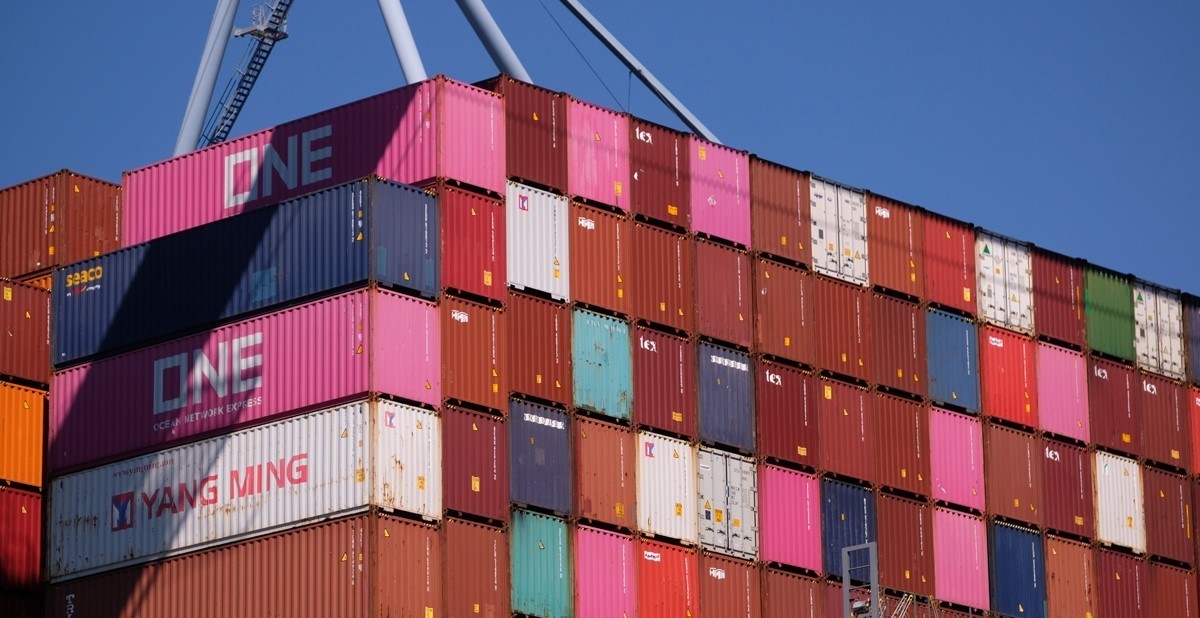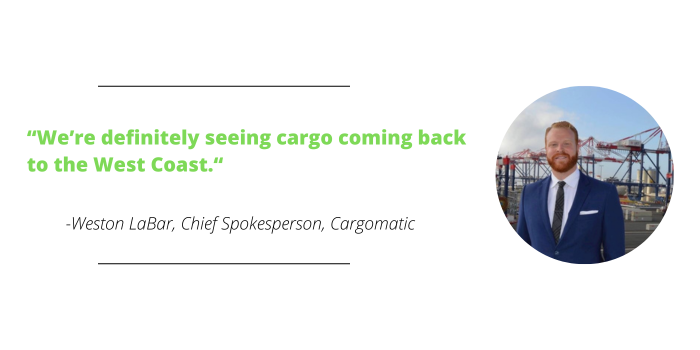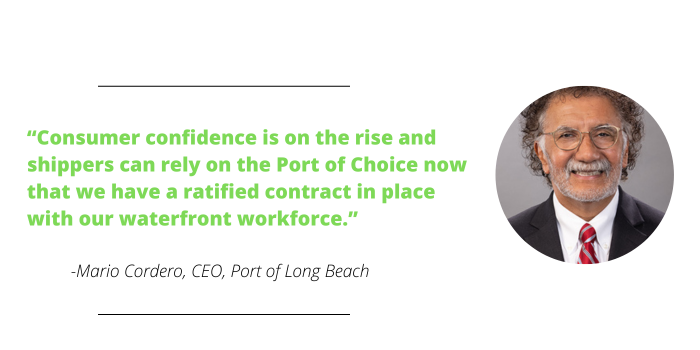Imports Rebound At West Coast Ports

West Coast ports continue to see a recovery in U.S. imports from Asia, which is a relief to the promotional products industry after labor disruptions threatened to upend the supply chain.
The West Coast’s market share of Asian imports climbed from 53% in July to 57.8% in August and 57.9% in September, according to PIERS, a provider of import and export data. By comparison, the East Coast’s share of Asian imports was 33.6% in September and the Gulf Coast’s share was 8.1% during the same period.
- In September, total U.S. imports from Asia hit 1.5 million twenty-foot equivalent units (TEUs), the highest amount since August 2022, according to PIERS.
“We’re definitely seeing cargo coming back to the West Coast,” Weston LaBar, chief spokesperson for Cargomatic, a California-based logistics and drayage provider, told the Journal of Commerce.

Peace Leads To Prosperity
On Thursday, the Port of Long Beach reported that it had achieved its busiest September on record, crediting consumer demand for holiday-related goods and the recent ratification of a hotly contested, six-year contract agreement between the International Longshore and Warehouse Union (ILWU) – which represents more than 22,000 longshore workers at 29 ports across the West Coast – and the Pacific Maritime Association (PMA), which represents port operators.
The Port of Long Beach moved 829,429 TEUs in September, up 11.8% from the same month last year and surpassing the previous record of 78,849 TEUs set in September 2020.
- Imports jumped 19.3% to 408,926 TEUs.
- Exports declined 10.3% to 101,248 TEUs.
- Empty containers moving through the port rose 11.5% to 319,255 TEUs.
“Consumer confidence is on the rise and shippers can rely on the Port of Choice now that we have a ratified contract in place with our waterfront workforce,” says Mario Cordero, CEO of the Port of Long Beach. “We look forward to a moderate rebound in cargo volume through the end of the year.”

It was also reported that September marked the port’s first monthly year-over-year cargo increase in 14 months. Although cargo volume is down 20.7% for the first nine months of 2023 from the same period last year, it’s on pace with pre-pandemic levels, when the port moved more than 5.7 million TEUs through September 2019.
East Coast Port Problems?
The West Coast’s gains may accelerate in the coming months as shipping companies contend with a couple of potential challenges for East Coast ports.
RELATED: Solutions Center: Shipping
The Panama Canal continues to face restrictions as an ongoing drought has reduced the waterway’s utility and threatens to cause greater problems if weather conditions don’t change. As a result, vessel capacity on all-water shipments from Asia to the East Coast has been reduced – some as much as 40% – in order to avoid hitting the bottom with water levels so low.
- Connecting the Atlantic and Pacific Oceans, the Panama Canal is a crucial route for global shipping, serving as a shortcut through Central America that allows vessels to avoid having to go around the southern tip of South America.
- Approximately 40% of the world’s cargo ship traffic travels through the Panama Canal at some point.
Furthermore, the canal is now allowing an average of 32 vessels per day, down from 34-36 earlier. The minor restrictions in place have already resulted in some delays and traffic congestion at sea. A live look of ships in the canal’s queue can be found here.
Also, the International Longshoremen’s Association (ILA), which represents 45,000 dockworkers at 14 ports along the East Coast and Gulf Coast, and port operators must agree to a new master contract before the current one expires on September 30, 2024. As of July, little progress has been made on the “fast track” early agreement, the Journal of Commerce reported.

